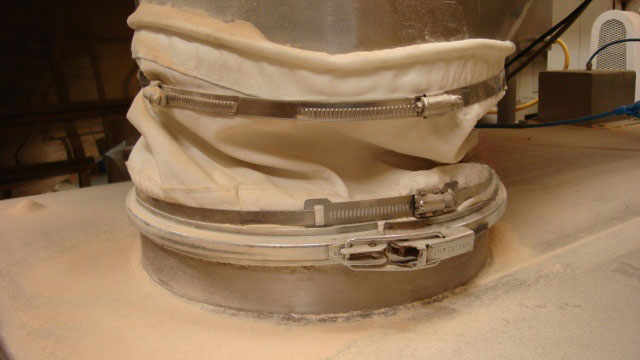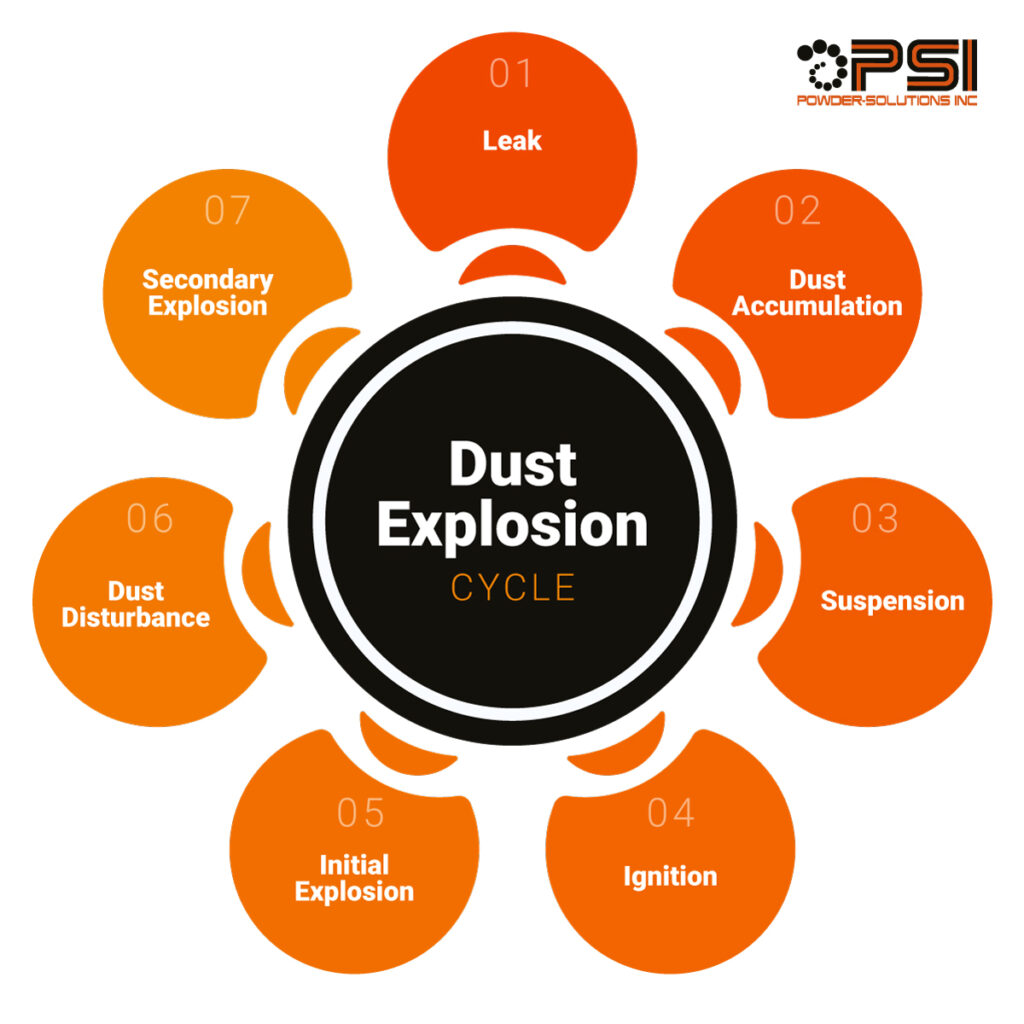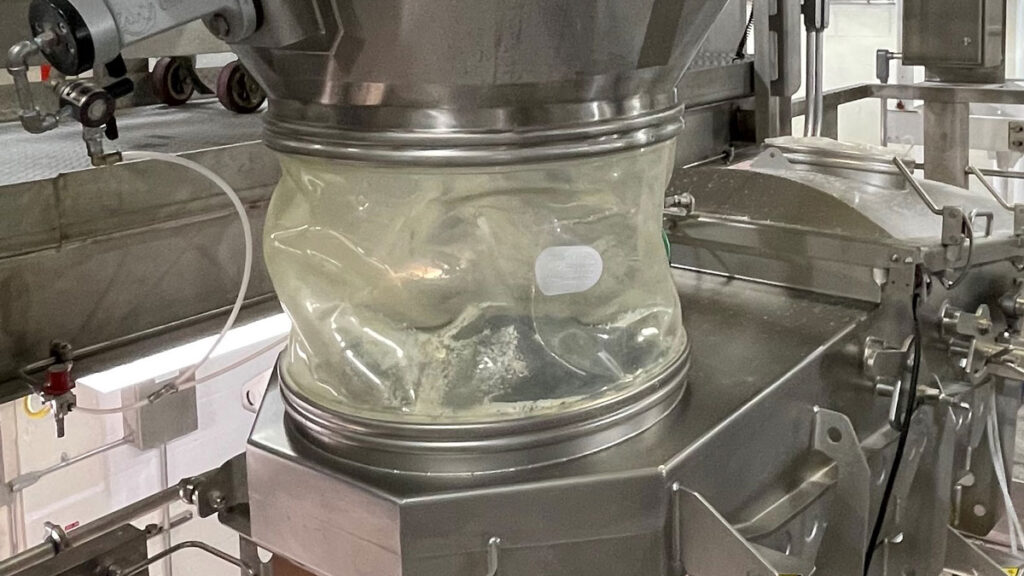Understanding the Dust Explosion Cycle (And How to Prevent It)
Dust explosion risks are present wherever powdered materials escape processing equipment and settle on surfaces — machinery tops, roof supports, ductwork, and cable trays. A thin layer of combustible dust in a closed room is enough to trigger an explosion if it becomes airborne and encounters an ignition source, such as sparks from equipment or electrostatic discharge (ESD). Addressing these risks is crucial for maintaining a safe work environment and preventing potentially disastrous incidents in manufacturing facilities.

The Dangers of Combustible Dust Explosions
Dust explosions occur when fine combustible particles gather on surfaces, become suspended in air, and ignite. These incidents can be catastrophic in industrial settings, often leading to secondary explosions that are even more destructive than the initial blast.
Industries at high risk include food processing, pharmaceuticals, chemical manufacturing, and metal processing, to name a few. Each handles materials that can create combustible dust, making explosion prevention crucial across various sectors.

For example, in a cereal manufacturing facility, fine wheat dust can accumulate over time. If a spark from faulty equipment ignites this dust, it can cause a primary explosion. This initial blast can then shake loose dust accumulated on surfaces, creating a secondary explosion many times more powerful than the first.
In a metal processing plant, aluminum dust might collect in ductwork. A sudden pressure change could disperse this dust. If that dust meets an ignition source like static electricity, a devastating explosion could occur.
These are just a few examples. No matter your industry, dust accumulation should be taken seriously, and every precaution to minimize the risks should be strictly followed.
Preventing Dust Explosions with BFM® Flexible Connectors
To mitigate dust explosion risks, your primary focus should be on reducing dust accumulation outside processing equipment. BFM® BLUEBAND™ flexible connectors offer an innovative solution to this challenge, particularly at transition points between equipment where dust leakage commonly occurs.

BFM® flexible connectors are 100% sealed, even under the high pressures of pneumatic transportation systems. Unlike traditional hose and clamp connectors that can deteriorate and leak, BFM® fittings maintain their integrity, effectively containing product and preventing dust from escaping.
These connectors not only prevent dust accumulation, they help contain potential explosions. Their unique design allows them to withstand significant internal pressures, reducing the risk of explosion propagation through the system. The popular BFM® Seeflex 040E fittings have been proven to contain internal explosions exceeding 60kPa, while the BFM® Kevlar Cover can withstand pressures over 100kPa (14.5psi, 1Bar).
Additionally, BFM® flexible connectors address the secondary concern of ignition sources. Made with static dissipative materials, they help prevent the buildup of static electricity that can lead to sparking. This feature, combined with proper grounding straps, significantly reduces the risk of dust ignition.
These features, along with their unique design, significantly reduce risk. By implementing BFM® flexible connectors, facilities can effectively address both dust containment and ignition prevention, creating a safer environment in powder processing operations.
The All-in-One Option
Beyond explosion prevention, BFM® fittings offer many benefits. They improve overall hygiene by eliminating dust leakage and enhance efficiency through easy installation and maintenance. Furthermore, the snap-fit design allows for quick changeovers, reducing downtime and increasing productivity.
These advantages have led major global manufacturers like AkzoNobel, Nestle, Unilever, and Mondelez, among others, to trust BFM® fittings in their facilities. By implementing BFM® flexible connectors, you’re not just reducing explosion risks – you’re investing in a cleaner, safer, and more efficient operation.


